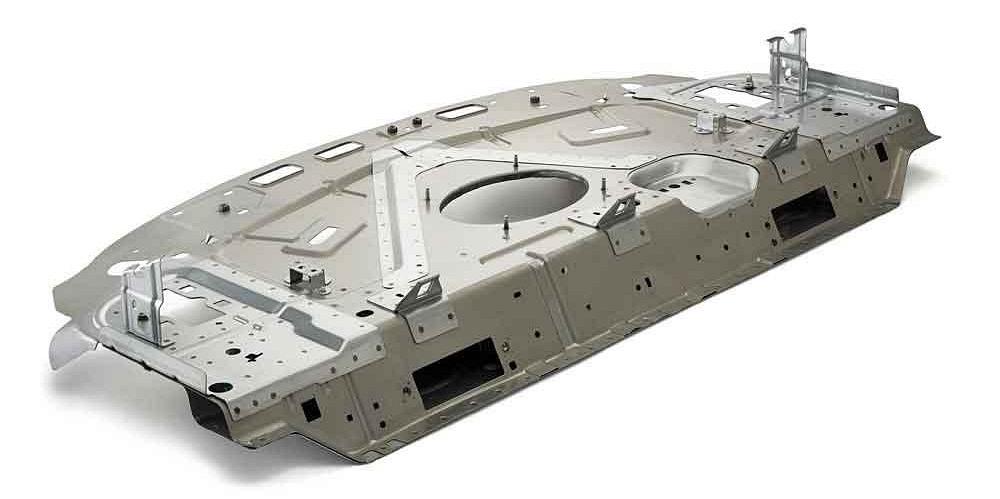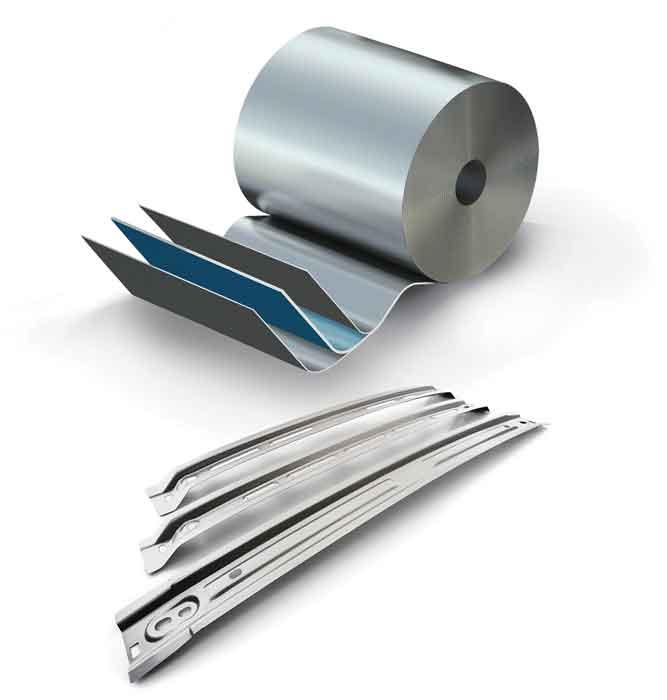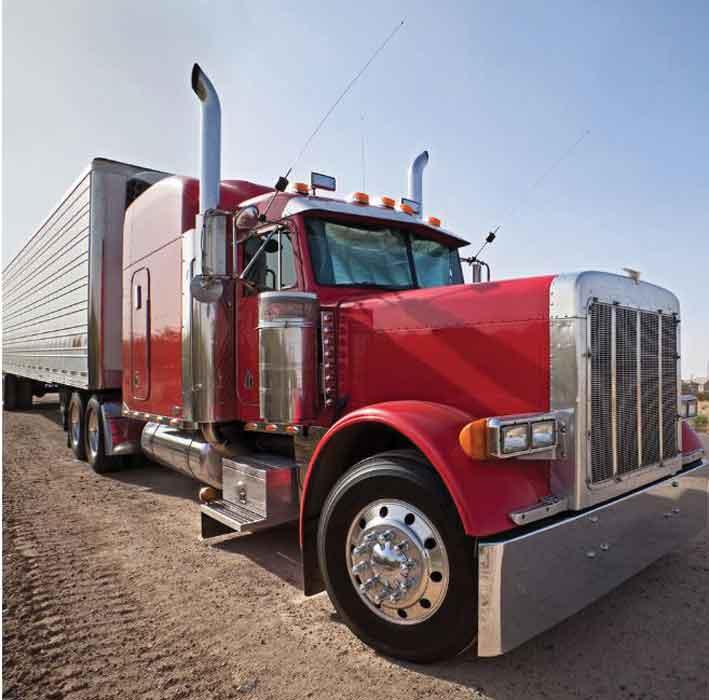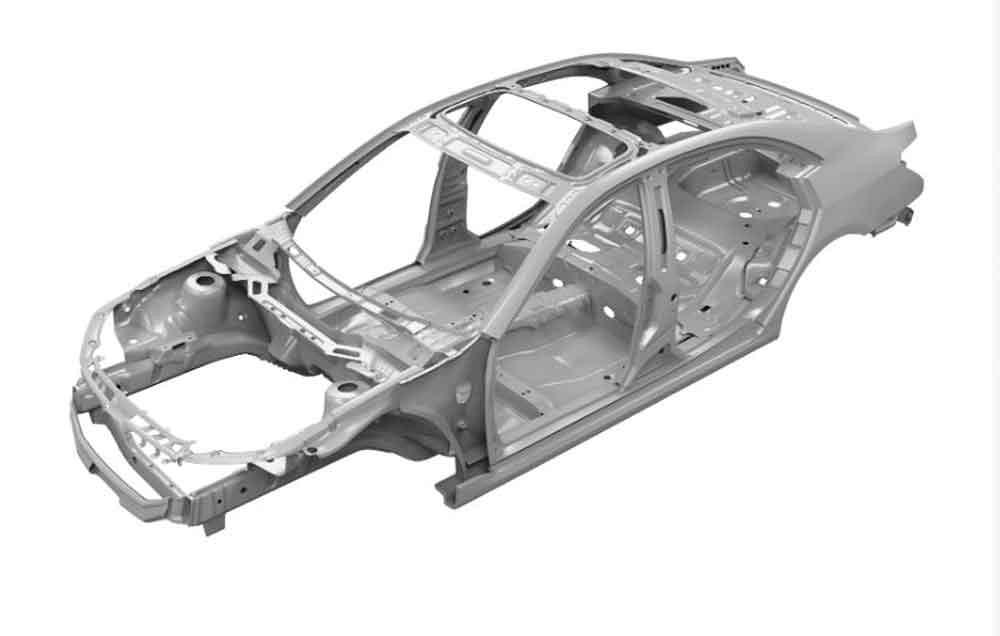Contributing editor
- FMA
- The Fabricator
- FABTECH
- Canadian Metalworking
Categories
- Additive Manufacturing
- Aluminum Welding
- Arc Welding
- Assembly and Joining
- Automation and Robotics
- Bending and Forming
- Consumables
- Cutting and Weld Prep
- Electric Vehicles
- En Español
- Finishing
- Hydroforming
- Laser Cutting
- Laser Welding
- Machining
- Manufacturing Software
- Materials Handling
- Metals/Materials
- Oxyfuel Cutting
- Plasma Cutting
- Power Tools
- Punching and Other Holemaking
- Roll Forming
- Safety
- Sawing
- Shearing
- Shop Management
- Testing and Measuring
- Tube and Pipe Fabrication
- Tube and Pipe Production
- Waterjet Cutting
Industry Directory
Webcasts
Podcasts
FAB 40
Advertise
Subscribe
Account Login
Search
Steel, aluminum laminate an alternative material for vehicle lightweighting
Formable, weldable, paintable metal substitute cuts weight by a third
- By Kate Bachman
- February 3, 2020
- Article
- Materials Handling

This automotive package shelf is stamped from MSC Smart Steel using a regular die and assembled via resistance spot welding. Image courtesy of Material Sciences Corp.
Material Sciences Corp. has put into production a new material to support automotive lightweighting efforts. MSC Smart Steel® is a lightweight laminate that is a formable, weldable, and paintable substitute for monolithic, low-carbon steel at up to 35% weight savings at the same thickness. It is produced as a coil.
The lightweight laminate material was a natural extension of MSC’s portfolio of acoustic laminated metals for quieting vehicles manufactured for years. R&D began in 2012 and production began in spring 2019.
One of the manufacturer’s legacy products, developed in the 1990s, is called Quiet Steel®, which is a laminate for acoustic applications. Its typical uses are for vehicle body panels, such as dashboard panels and floor pans, as well as engine components such as oil pans, valve covers, and timing covers. More recently, the company introduced Quiet Aluminum®, which offers all of the weight savings associated with aluminum but also the dampening characteristics needed for aluminum body structures and under-hood applications.
MSC specializes in laminating metals, according to Matt Murphy, chief technology officer for Material Sciences. “As CAFE [corporate average fuel economy] standards drove the automakers to improve fuel economy, materials that offer lightweight solutions without compromising performance become attractive. Our expertise in laminating acoustic laminates served as a great starting point for the development of MSC Smart Steel.”
Composition
The material is a three-layer laminate. The outer skins are steel and the inner layer is a low-density, conductive, reinforced polymer core. The density of the polymer core is less than aluminum.
Typical thicknesses evaluated for automotive applications range from 0.68 mm to 2.5 mm. The ratio of the outer steel skins to the inner core is a function of many factors, including weldability, formability, and part bending rigidity.
A recent example under development is an automotive interior part stamped from 1.0-mm steel that weighs 3 pounds. MSC Smart Steel was engineered to meet all of the same vehicle requirements with a total thickness of 1.08 but results in a total weight of 2 lbs., Murphy relayed.
Customized for the Part, Application
The material is engineered to meet performance requirements of each application, and the stackup of each layer is customized. The steel thickness and grade and polymer core thickness vary from product to product. “We want to maximize weight savings, so we engineer each product for the application,” Murphy said.
Because the polymer is low density, the less steel and more polymer in the laminate structure, the more weight can be saved, Murphy said. “But the calculation to determine how thick the metal should be and how thick the polymer should be is a function of the part performance requirements.”
Stiff. The structure of the laminate enables it to reduce mass while maintaining bending stiffness—an attribute that is critical in many areas of the vehicle. The company engineers the ratio of the metal skins to the core to maintain the stiffness or bending rigidity of that part as well as to save weight.

A new engineered laminate material comprising steel or aluminum and a polymer core can reduce part weight by a third. Image courtesy of Material Sciences Corp.
How It’s Processed
MSC Smart Steel is compatible with existing manufacturing and painting processes, the company states. It can be stamped in typical dies without modifications, spot-welded with existing equipment, and processed through standard electrocoat and paint systems with seamless integration with existing manufacturing systems, according to the company.
Weldable. “The polymer core is engineered to be conductive. As a result, when placed between the two skins of steel, the product can be spot-welded to almost any grade of steel with welding equipment found in any body shop,” Murphy said.
The OEM dictates the design and performance requirements of each component in the vehicle. As a result, MSC engineers work closely with OEM design teams for material selection, joint design, fatigue and strength criteria, as well as weight targets, Murphy said.
A conductive particle inside the polymer is what makes the material weldable. This is the first spot-weldable low-density steel composite laminate to be used in a body application, the company claims.
Differences, Similarities
Naturally, questions arise about the differences between MSC Smart Steel and monolithic steel
Tooling. In terms of the stamping dies, it is important to maintain sharp trim dies and tight clearances on the trim to cut through all three layers of the laminate, Murphy said.
Forming Simulation. Murphy said that in the past, tool designers based many of their decisions on experience and trial and error to anticipate items such as springback and formability. However, modern tool designers rely heavily on forming simulation software to design the entire die. “Today, there’s a big reliance in our industry on predictive capability. Automotive stampers use tools such as PAMSTAMP® or AutoForm® for their die designs. Very often, die build shops will construct the tooling 100% based on the software prediction,” he said.
Because a laminate is a multilayered material and each layer has distinctly different properties, it is critical that the properties of each layer are modeled separately and correctly with the forming simulation program. Key attributes such as springback and formability exhibit a higher correlation between what the software predicts and what is actually stamped when Smart Steel is modeled in layers. “MSC is working closely with AutoForm engineers as well as several tool and die shops to fine-tune that correlation between the software prediction and the actual stamped part,” he said, adding that the primary focus now is the draw process and springback.
Finite Element Modeling. Meeting panel-bending rigidity is critical to many stamped vehicular parts. Similar to modeling Smart Steel for forming simulation, the laminate is also modeled with three discrete layers for finite element. While the input properties are different for finite element analysis (FEA), the core layer, which is typically 40% of the cross-section thickness of the material, is significant. Therefore, it requires that both properties of the steel and the core are included in the data cards. MSC often performs FEA on all target applications but also provides this data to customers for their internal analysis, he said.
The same property-testing procedures for stress-strain curve and forming limit curve that are used to evaluate monolithic steel and aluminum are used to evaluate MSC Smart Steel and Smart Aluminum, Murphy said. “For our predictive stamping correlation effort, we’re stamping parts, scanning them as a 3D image, and then comparing the scan with the forming prediction. We have made great progress through the evaluation of different modeling procedures and material properties.”

When used to form a truck’s bumper shell instead of monolithic steel, MSC Smart Steel can cut its weight by 15 pounds. Image courtesy of Material Sciences Corp.
Recyclable. Although it’s a mixed material, the entire laminate can be recycled because its polymer inner layer consists of conductive particles and carbon-based polymers, Murphy said. To prove its recyclability in a test, the laminate was melted to a molten state and the residual was sent to a lab for chemical analysis. The chemical composition was then compared to a monolithic steel test sample.
“We were looking for anything in the recycled Smart Steel that would not be found in monolithic steel. The results showed that the samples were similar in both chemical composition and quantity. Some are fractionally higher or lower, but the results are very consistent,” Murphy said.
Weight Objective, Lightweighting Strategy
The automotive industry has focused intensely on the need to reduce weight, but every vehicle has different weight targets, Murphy said. “What it comes down to is, what is their threshold for mass? Depending on the size of the gap from actual weight to target weight, automakers may take more extreme measures to save weight. For example, converting the Ford F-150 body from steel to aluminum was a fairly bold strategy to save weight in that segment.”
Ford’s adoption of aluminum in the Ford F-150 prompted a lot of speculation throughout the industry, he added. “Were General Motors and Dodge going to make the ‘all-in’ move to aluminum on the forthcoming redesign of their trucks? They did not,” Murphy said. “While they did use aluminum selectively, they each adopted mixed metals strategies. They used aluminum in certain parts of the car, such as doors, fenders, the tailgate, and the hood, while the truck bed itself remains in steel.”
There are many material choices for the design of each subsystem of a vehicle. “For example, plastic, aluminum, advanced high-strength steel [AHSS], or magnesium all could possibly be used for the same application. However, there are trade-offs in selecting one over the other. While one material may have the lowest cost, it may add the most mass, need the most expensive tooling, or have the longest cycle time. OEMs consider all of these when selecting materials for vehicles,” Murphy said.
Another important determining factor is material compatibility. Although aluminum and steel are very common vehicle materials, joining them requires extreme attention, he said. As a result of the difference between aluminum and steel in electrode potential, galvanic corrosion will result. To resolve this problem, typically one or both of the materials is coated before assembly to prevent corrosion.
“All of these materials cannot be used everywhere,” Murphy continued. “For example, you would not typically use ultrahigh-strength steel for a hood. It is difficult to form and the surface isn’t going to meet appearance requirements. So there are criteria other than weight dictating where all these different materials can be used.”
Best Applications: Roofs and Bumpers
The material is designed primarily for applications that require stiffness, rather than those requiring high strength, Murphy said. “There are many places on a vehicle where Smart Steel will have equal or greater stiffness at a 35% mass reduction. We are not targeting the A pillar, B pillar, and structural components made of AHSS,” Murphy said.
“The parts we’ve been replacing are already as thin as they can go, and we can actually save more weight with this material.”
Designed with a high stiffness-to-weight ratio, the laminate is a viable option for stamped parts needing stiffness, such as roof bows, stamped bumpers, and body-in-white stampings that typically are produced from cold-rolled steel, according to Murphy.

As a rule, automakers have a mixed materials strategy for each vehicle component. MSC Smart Steel or MSC Smart Aluminum can be part of that strategy. Image courtesy of Material Sciences Corp.
The Smart Steel’s first foray in production was anti-flutter roof bows for roof panels. “The roof panels on SUVs are massive and they’re very thin. At highway speeds, the roof actually flutters at a micro level and passengers feel an annoying pressure drop in their ears called booming,” Murphy said. “So these bows basically stiffen up the roof and prevent it from fluttering. A stiff roof bow is critical to solving this problem, and MSC Smart Steel provides that.”
A recent application for the material is a steel bumper for a full-sized truck such as an F-150 or a Silverado. “Generally, the full-sized truck market in the U.S. is still using a steel bumper shell that weighs 35 to 45 lbs. They’ve been made like that for 100 years. Imagine a 30% weight savings in that application. So instead of saving half a pound on a roof bow, you’re saving up to 10 lbs. on a front bumper. A significant amount of development is going into this right now,” Murphy said.
The customized bumper shell has an asymmetric construction. The visible surface, or outer skin, is made of HSLA 340 MPa and is thicker than the backside skin. This grade and thickness were selected because the bumper’s surface is cosmetic and has to meet dent requirements. The polymer core is similar to the roof bow core with a backside skin. The resulting weight savings is 30% to 35%. “You’re looking at 8 to 9 lbs. off just the front and probably another 6 lbs. off the rear, so about a 15-lb. weight cut on a full-size truck,” Murphy said.
Award Winner
MSC Smart Steel has been recognized for its material innovation with three awards: The Award for Steel Excellence in 2014 by the American Metal Market, the PACE Award by Automotive News in 2019, and the Altair Enlighten Award in 2019.
About the Author

Kate Bachman
815-381-1302
Kate Bachman is a contributing editor for The FABRICATOR editor. Bachman has more than 20 years of experience as a writer and editor in the manufacturing and other industries.
subscribe now

The Fabricator is North America's leading magazine for the metal forming and fabricating industry. The magazine delivers the news, technical articles, and case histories that enable fabricators to do their jobs more efficiently. The Fabricator has served the industry since 1970.
start your free subscription- Stay connected from anywhere

Easily access valuable industry resources now with full access to the digital edition of The Fabricator.

Easily access valuable industry resources now with full access to the digital edition of The Welder.

Easily access valuable industry resources now with full access to the digital edition of The Tube and Pipe Journal.
- Podcasting
- Podcast:
- The Fabricator Podcast
- Published:
- 04/16/2024
- Running Time:
- 63:29
In this episode of The Fabricator Podcast, Caleb Chamberlain, co-founder and CEO of OSH Cut, discusses his company’s...
- Trending Articles
How to set a press brake backgauge manually

Capturing, recording equipment inspection data for FMEA

Tips for creating sheet metal tubes with perforations

Are two heads better than one in fiber laser cutting?

Hypertherm Associates implements Rapyuta Robotics AMRs in warehouse

- Industry Events
16th Annual Safety Conference
- April 30 - May 1, 2024
- Elgin,
Pipe and Tube Conference
- May 21 - 22, 2024
- Omaha, NE
World-Class Roll Forming Workshop
- June 5 - 6, 2024
- Louisville, KY
Advanced Laser Application Workshop
- June 25 - 27, 2024
- Novi, MI



























